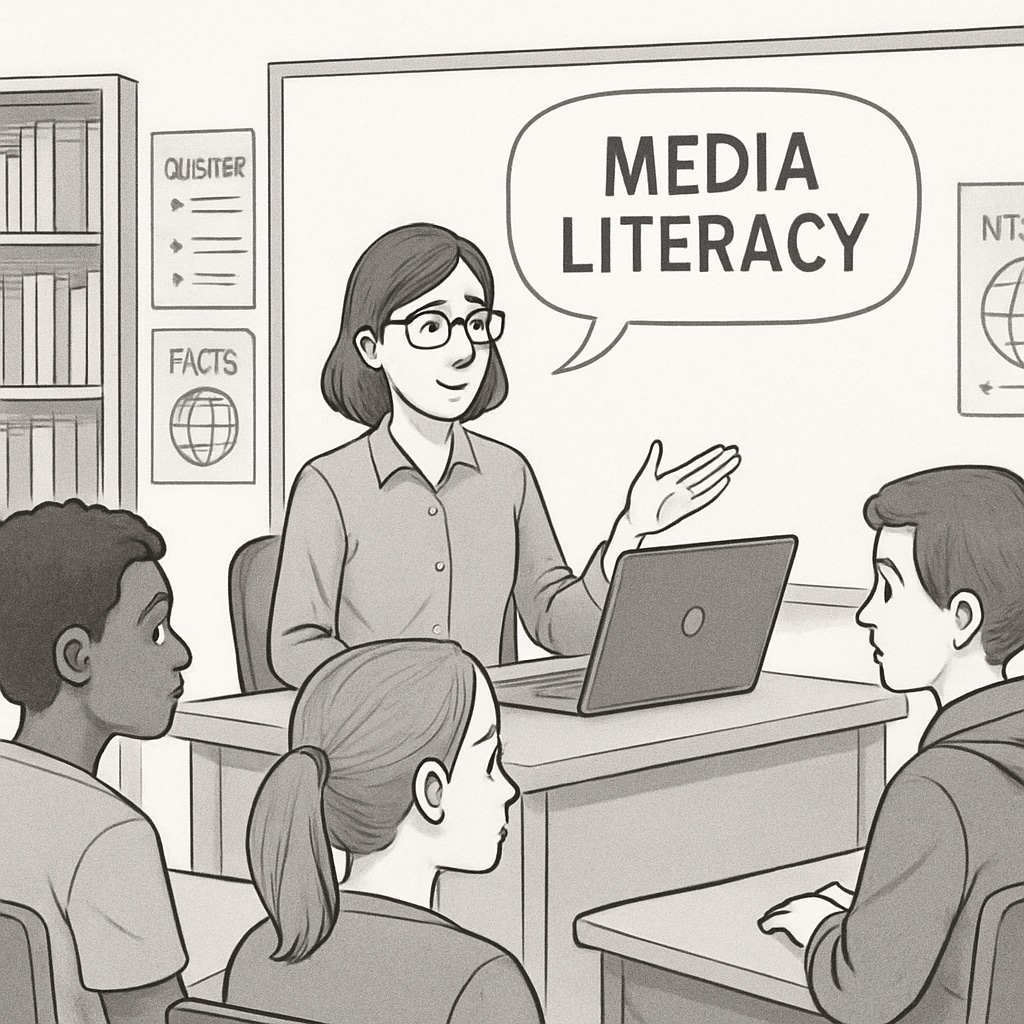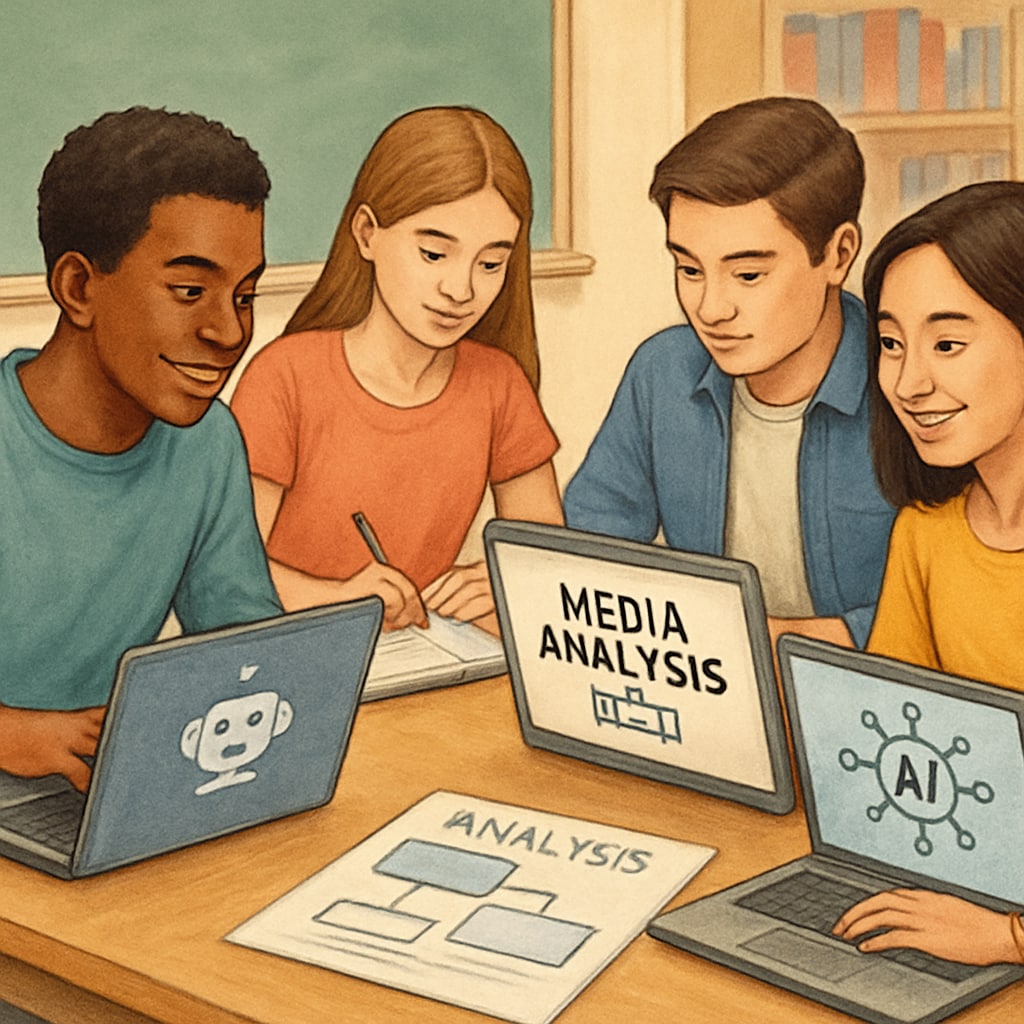In today’s rapidly evolving digital landscape, media literacy has become an essential skill for high school students. To support educators in grades 9–12, a new set of free AI-powered teaching tools has been developed. These resources include structured AI writing prompts that utilize tools like ChatGPT to enhance students’ ability to critically analyze media and film content. By integrating these prompts into the classroom, teachers can empower their students to develop critical thinking skills and build strong media literacy foundations.
These resources are designed with educators in mind, offering practical ways to make lessons more engaging and impactful. Below, we’ll explore the benefits of these tools, provide an overview of the structured prompts, and discuss how they can transform your media literacy curriculum.

Why Media Literacy Matters in the AI Era
Media literacy is the ability to access, analyze, evaluate, and create media in various forms. With the rise of AI-generated content and deepfake technology, students are exposed to an unprecedented volume of information, much of which may be misleading or biased. Therefore, teaching them to critically assess media has never been more important.
AI tools, such as ChatGPT, can play a pivotal role in this educational journey. By providing intelligent writing prompts, these tools encourage students to dig deeper into how media is crafted, the messages it conveys, and the underlying biases it may contain. High school teachers can leverage these resources to create a more interactive and reflective learning environment.
For more information on media literacy, visit the Media Literacy page on Wikipedia.
Overview of the AI Writing Prompts
The AI-assisted teaching resources include five structured writing prompts designed to address key aspects of media literacy. These prompts encourage students to examine media critically while utilizing AI tools to refine their analytical skills. Below is a brief description of each prompt:
- Analyzing Media Bias: Students use AI to identify and discuss potential biases in a news article.
- Exploring Film Techniques: Students analyze how camera angles, lighting, and sound influence a film’s message.
- Creating Counter-Narratives: Using AI, students draft alternative headlines or narratives for a piece of media.
- Decoding Advertisements: Prompts guide students to identify persuasive techniques in advertisements and their effectiveness.
- Evaluating AI-Generated Content: Students compare AI-generated articles with human-written ones, examining their reliability and tone.
Each prompt is designed to be flexible, allowing teachers to adapt them to different classroom settings and student needs.
How to Integrate These Resources Into Your Classroom
Incorporating AI writing prompts into your curriculum can be seamless and effective. Here’s a step-by-step guide to get started:
- Introduce the Concept: Begin by discussing the importance of media literacy and the role of AI in today’s world.
- Demonstrate the Tools: Show students how to use AI platforms like ChatGPT for research and analysis.
- Assign Prompts: Choose one of the five prompts and guide students through the process.
- Facilitate Discussions: Use the outcomes of the prompts as a basis for class discussions on media literacy.
- Encourage Reflection: Ask students to reflect on their learning and the role of AI in media analysis.
By following these steps, you can create a dynamic classroom environment that fosters critical thinking and media literacy skills.

The Broader Impact of AI in Education
AI tools are transforming education by making learning more personalized, interactive, and accessible. In the context of media literacy, these tools provide students with unique opportunities to engage with real-world issues. They also help teachers save time on lesson planning while offering creative ways to present complex topics.
For a deeper dive into AI in education, check out Artificial Intelligence on Britannica.
In addition to media literacy, AI-powered tools have potential applications across various subjects, from STEM to humanities, enriching the overall learning experience.
Conclusion: Empowering Educators and Students
The integration of AI-powered writing prompts into media literacy education is a game-changer for high school classrooms. These free resources not only make lessons more engaging but also equip students with the skills they need to navigate an increasingly complex media landscape. By using AI tools like ChatGPT, teachers can foster critical thinking, encourage creativity, and prepare students for the challenges of the digital age.
If you’re a high school educator looking to enhance your media literacy lessons, exploring these AI-powered resources is a great place to start. The future of education is here—let’s embrace it together.
Readability guidance: Use short paragraphs and bulleted lists to summarize key points. Ensure a balance of overviews and actionable steps to maintain engagement. Avoid overly technical jargon to make the content accessible for educators of all backgrounds.


